Seven Telltale Traits Product Teams Can Find in Brooklyn Nine-Nine
This article got published in Product Management Insider.
Did your (day)-dreams end up in absolute action, such as chasing perps, hunting leads, interrogating passers by or negotiating for hostages? Nice! You’re gleefully admitted into the virtual NYPD clan that’s fancying the police procedural humor series, Brooklyn Nine-Nine.
Scene shift! You’re sitting at your home desk (your new work headquarters), and you really need to put dreams into action — for your product! Chasing product usage journeys, hunting leads, interrogating customers for stories and negotiating your integration deals? For the product person in you, here are seven common character traits shown by our leading Nine-Nine stars.
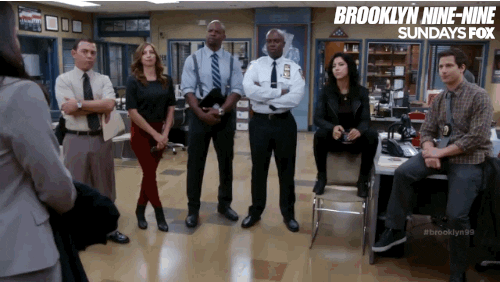
Haven’t watched the show? Never mind! You can quickly grasp the characters from the description. Hey, thank me later when you end up watching the show.
1. Admit confidently mistakes, facts or opinions
If there’s something Raymond Holt, the commanding officer, has taught us, it’s taking pride in shamelessly admitting everything — from mistakes one commits to honest opinions one gives, even when things are junk. Not a moment goes by without noting what a swag captain he proves to be, every time he apologizes for his erroneous deeds (well, sometimes, he does create a scene, eventually giving in). What stands out is the ability to show everything right on the face, bringing much-needed clarity early on.
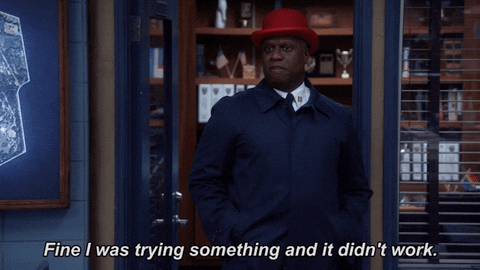
Next time you are transfixed with logjams or pain-points in your product, ensure you put your “Holt” face on. Bring mistakes to light sooner, even if it’s something you or your team commits. Owning up to the features or metrics that didn’t work and being direct on what amendments could be done solve the issue of miscommunication. See a design or UI text that’s drab? Well, admit it! And move to the step of taking action.
2. Go by infectious enthusiasm
Who could possibly cheer up the mise en scène any time of the day, other than our beloved sergeant, Terry Jeffords! From his articulate third-person references and built-up demeanor, to the wide smile and positive affirmations, he’s the cool dad. Terry pushes everyone to not just meet their goals, but to believe in their work, even when times prove whammy. Not to mention his borderline-artful moments when he turns out to be a gullible fraud; he’s the happiness-monger of the team.
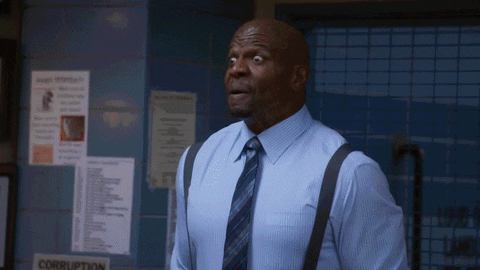
What to take away from Terry? The contagious cheer and the plausible trick to lighten up bleak moments. Your product team could face a deadline, working on essential bug fixes, or even burning the midnight oil on running a build. When things go berserk or people slack off, be the “Terry,” and infuse some enthusiasm into others. Of course, the next best feature or landing page is important, but the people who create those are crucial, too.
3. Be the all-things-right keeper
Reality hits hard sometimes. Uncertainty creeps in, and suddenly, everyone looks for the one person who could keep times under control, stand up for righteousness, and get shit done. Here emerges Amy Santiago, the fastidious champ of the gang. Full of ambition and unflinching energy, Amy is the go-to-person for fixes. She does face bouts of fear when things go unplanned, but her straightforward attitude makes her a leader the gang can look up to.

Being an Ames is a hard-core job, but it’s doable. During perturbing times, such as product releases, it’s easy, as a team, to lose cool and get lost in (irrelevant) details. The product UI can stagger, copywriting can take time, and market positioning might require a revisit. With only days left, dynamic planning is in the picture, and this is where you put Amy’s cap on: finding optimal routes; deciding on simultaneous task completion and stellar information delivery, so everyone understands; and following up on deliverables.
4. Sometimes, seek solace in your intuition
The docile, created-for-parody person in the troupe is, of course, Charles Boyle! He may be the best gourmand on earth, but his superpower is intuition. Boyle may go by predilections most of the time, but his sense of inkling, especially during transfixed cases, is a sure hit. Swept away by his sheer gut, Boyle lands in the right ground of detection, whether it’s identifying the perp or goofing around friends’ lives.
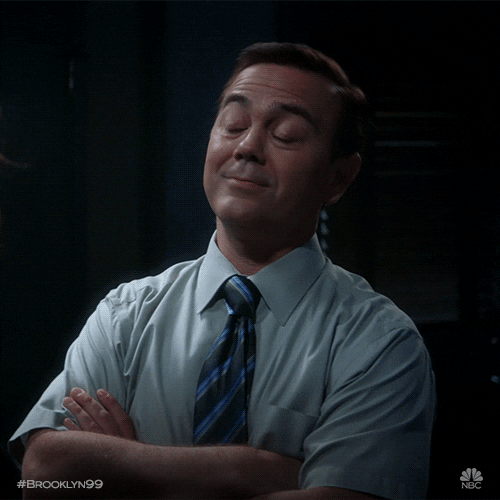
When was the last time someone told you to go by your intuition with product development? Right from attaining your market fit to pipelining features and working to build them, intuition plays a strong role in steering the work forward. Your collective internal beliefs and experiences give you the right direction when stuck, make you ask the right set of questions or outline assumptions, and even turn haze into a clear picture.
Going by gut intuition is not going to lead to victories all the time; it might land on product roadblocks once in a while, but the journey is always a learning attempt for your team. So, the next time you have an intuition, use it without the guilt of overriding data-driven experiments (I know good ole A/B testing is favorite for most of you), but again, find your balance between intuition- and fact-driven decisions.
5. Complete the art on the canvas before display
Let’s say hi to the no-nonsense pal, Rosa Diaz. Rosa is on her own. Rosa doesn’t place herself in sit-downs or small-talks. Rosa thinks through every situation, gets to the nitty-gritty, and lays out her thoughts collectively — only after she corroborates her steady victory. Not easily drawn in by petty calls or impetuous wins, she’s the damsel you’d root for in dire deeds and not distress. Clean analysis, clear-cut thinking and catalytic plans map her perp wins.
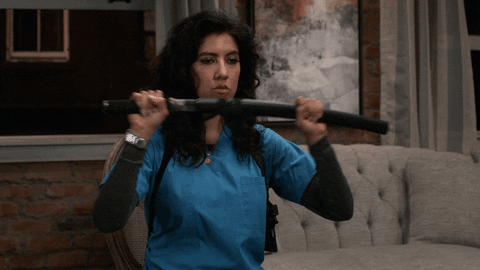
Be the “Rosa” on your team, when the time calls. Before entering into critical decision-making or product-strategy planning, get back to your white (or black) board, and think through every little possible station in your roadmap. After all, baseless assumptions and plans don’t lead to good product outcomes. Turning the think-tank on, spurning distractions/useless metrics and gauge-points, and projecting a long-term working plan for your product demands the Rosa style.
6. Prep, perform and play
Drum-roll welcome to our party-popper hero of the clan, Jake Peralta. What’s it like to be this goof in town? Jake has the incredibly immature, ineffably smart and impeccably annoying character you’d struggle to handle. Torn between charming his commanding captain Holt for the atta-boy pat and solving loopholes in his dream-come-true cases, Jake is the dynamo you’d love to be next to. With humor as his lever, he can waltz through any case, emerging as both the laid-back bloke and the amazing detective/genius. In a nutshell, Jake is the comic cop, who perfectly balances all work and all play.
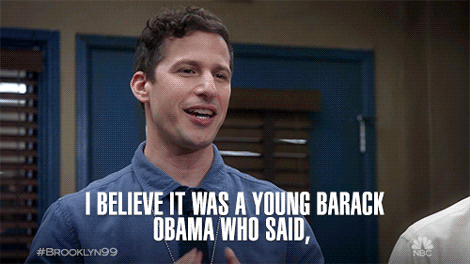
The biggest lesson in building, managing and marketing products lies here: knowing how to balance both off-cycles and top performances. Accepting lulls and acknowledging under-performances in the team should be a periodic activity, as these are pavements to actual product success. Encourage your teammates to step away from their dramatic work deadlines, take some breather time to reflect on performances, pace around light-headed, and get back to being serious on the job with more zing. Infuse a bit of humor and enthusiasm into your serious tasks, and see success the way Jake does.
7. Be outrageously confident
The brain-bombshell has got to be the last and latest, Gina Linetti. Gina is next only to Captain Holt in saying things straight on. Driven by passion and bold poise, she can achieve anything, from forming cool dance clubs to becoming a media celebrity. If anything, she’s the tonic for the 99 Precinct’s dearth of swag-gag.
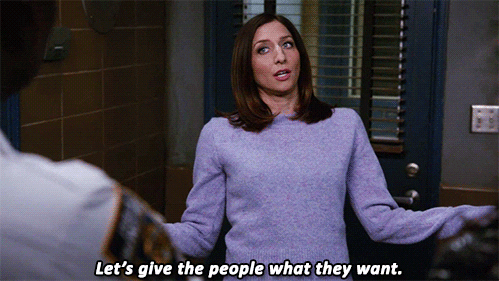
Being Gina is simple: It’s when your team starts showing some hue and confidence both in personality and product. Keep your purpose going strong, understand what the market needs, and reflect this transparently in the product you build. Bring Gina into a situation when things have to be dealt with in a straightforward way, so team collaborations and product functioning are seamless.
Now, go get your product teams in action, and hey, watch (and re-watch) these traits.

